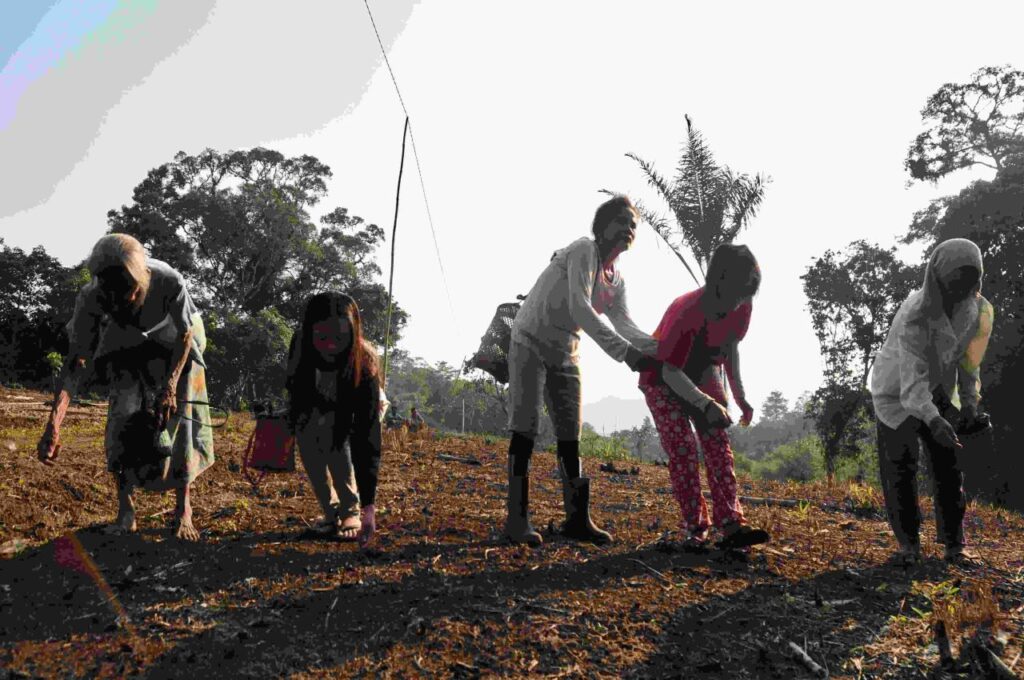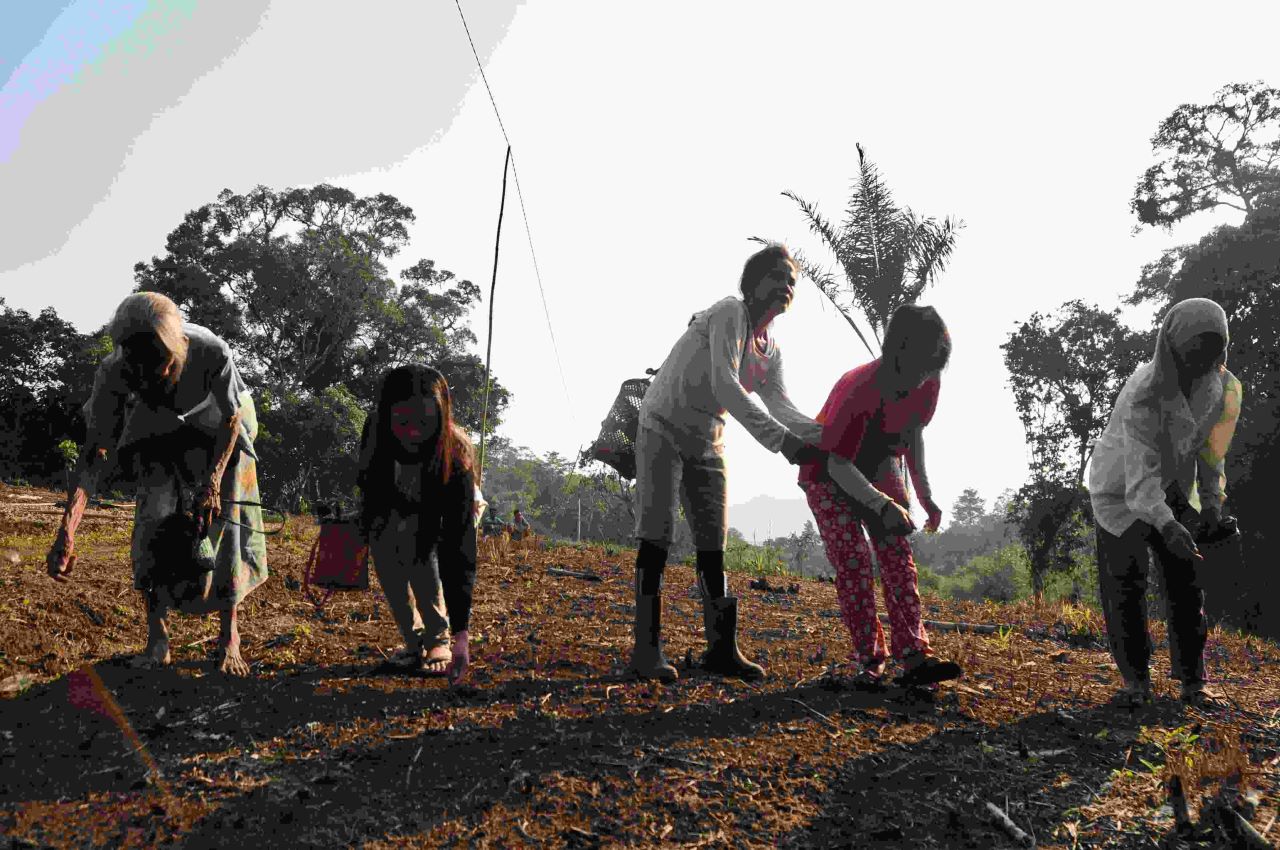
While global awareness of forests’ significance has grown, Southeast Asia grapples with ongoing forest loss. The region has lost approximately 80 million hectares of forest between 2005 and 2015, with projections indicating further shrinkage or growth. In the Philippines, the Food and Agricultural Organization estimated that the country has the second fastest deforestation rate in Southeast Asia and seventh globally between 2000 and 2005, losing roughly 2.1% of its forest cover annually. The cause for the loss is human activities like converting forests to farms, using trees for fuel, illegal logging, and clearing land for mining all contribute to this rapid decline.
With increasing numbers of changing and extreme weather patterns due to the climate crisis, forests will continue to be in a dire state, as there will be potential decreases in coffee, palm oil, sugar cane, and corn production across Southeast Asia. In the Philippines, the problem comes with a conundrum, as there is a risk of a hunger crisis, exacerbated by the pandemic. Therefore, the question is how do we increase the protection of our forest without impacting our food security.
We have seen efforts to ensure food security in the form of food estate development. However, these efforts are mostly done without a sustainability framework or are designed to meet a short-term goal. For example, Indonesia has been trying to develop its food estate programs for years to ensure food security; however, these projects have not had successful outcomes. What’s left now are damaged forests and peatlands, the latter being fragile ecosystems that can cause an increase in carbon emissions, forest fires, and transboundary haze.
Apart from impacting the environment, these approaches also do not have the local community’s interest at hand. Opening up these lands also means relocating some indigenous communities that have lived on the land for generations. This will cause more issues in the future, including cultural erosion, economic disparity, and health impacts.
In this challenging landscape, WALHI, the Indonesian Forum for the Environment, stands as a beacon of hope. Founded in 1980 and part of the Friends of the Earth International network since 1989, WALHI is Indonesia’s largest and oldest environmental advocacy NGO. Committed to promoting resilience and community economics, WALHI’s mission revolves around restoring environmental rights and empowering local communities.
“At WALHI, we have witnessed the success of the Wilayah Kelola Rakyat (WKR) or Community Managed Area approach in promoting sustainable land management among the communities that we work with. We firmly believe this approach can be used as a benchmark for communities across Indonesia and replicated in other Southeast Asian countries,” said Uli Arta Siagian, WALHI National Forest and Big Plantation Campaign Manager.
Empowering Community to Make Environment Thrive
At the heart of WALHI’s work lies the Wilayah Kelola Rakyat (WKR), a community-based area management that champions sustainable land management. WKR integrates governance, production, distribution, and consumption processes while respecting local wisdom and values, ensuring no land conflict between the communities and other private parties. By empowering communities to manage their resources, WKR addresses structural poverty and inequality while defending against extractive industries.
WALHI has also helped communities, such as the Dayak Meratus, one of the indigenous communities in Borneo, to continue their swidden farming practice. While the practice is focused on the slash and burn activities, it ensures that the land being cleared is not part of the fragile ecosystem. Additionally, the Dayak Meratus also provides ample time for the land to recover by not planting anything after a period of time. During that time, the Dayak Meratus will search for another area to be cultivated.
Apart from conducting this practice, the Dayak Meratus tribe also practices intercropping, growing various crops in the same field. This allows a variety of staple foods to be consumed but also helps the crops to be more resilient, reduces pest outbreaks, and enhances the resilience of the farming system against environmental fluctuations.
What Dayak Meratus has been doing, is what WALHI wants to replicate across Indonesia. Focusing on each area’s strength and the community practices, ensuring to meet the needs of local communities. At the same time, there should be an increase in sustainable agricultural practices that improve yield without exploiting the forest.
Challenges and Trajectories
What WALHI proposes is not an entirely novel approach, The Forest Development Center of the College of Forestry and Natural Resources (CFNR-FDC) from the University of the Philippines Los Banos has previously floated the idea. Especially in addressing the country’s chronic food insecurity and malnutrition problems. This highlights the often-overlooked role of forests in contributing to food security, alongside traditional agriculture.
However there are going to be challenges moving forward. Despite the approaches proposed by WALHI, there are still uphill battles that the organization and local communities must face, especially on government regulations, restoring the ecosystem to support the community, and whether the effort can be scaled up.
In the Philippines, similar efforts are already being undertaken, namely the Carood Watershed Project, backed by the U.N.’s Food and Agriculture Organization (FAO). The project tackles environmental health and food security as it aims to restore the watershed’s natural balance by focusing on reforestation, water reservoir protection, and sustainable land management. This collaborative effort brings together government officials, local communities, and academic institutions to ensure collaborative decision-making.
Replicating the WKR approach elsewhere requires sensitivity to local contexts and active community participation. Nonetheless, the model offers a blueprint for sustainable land management in the face of escalating environmental challenges, and most importantly, it holds promise for other Southeast Asian countries, to balance food security and environmental protection.

